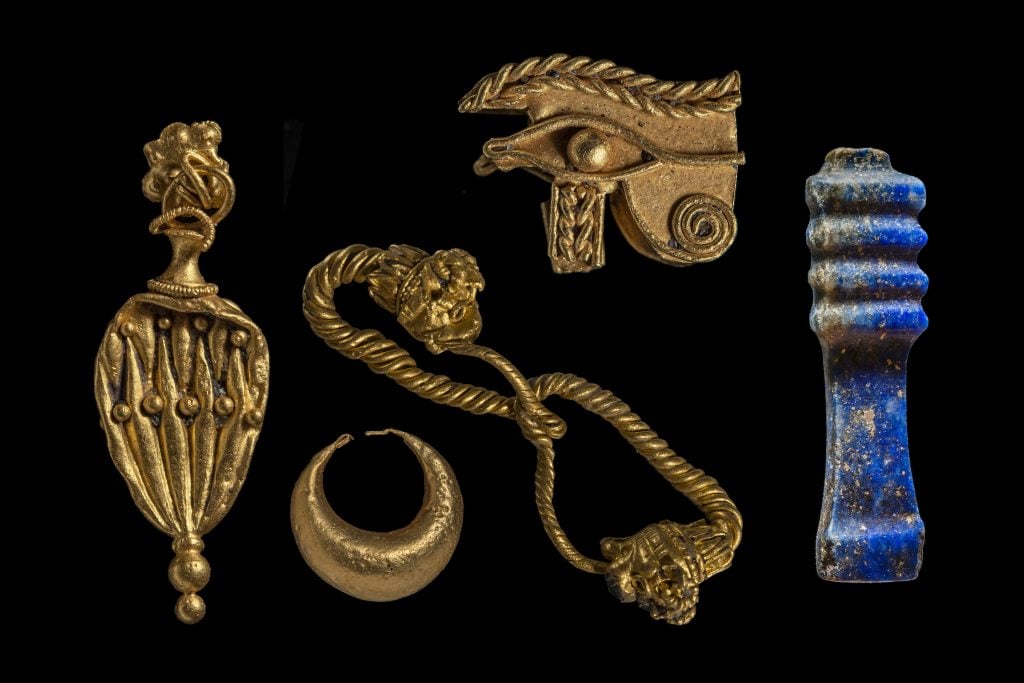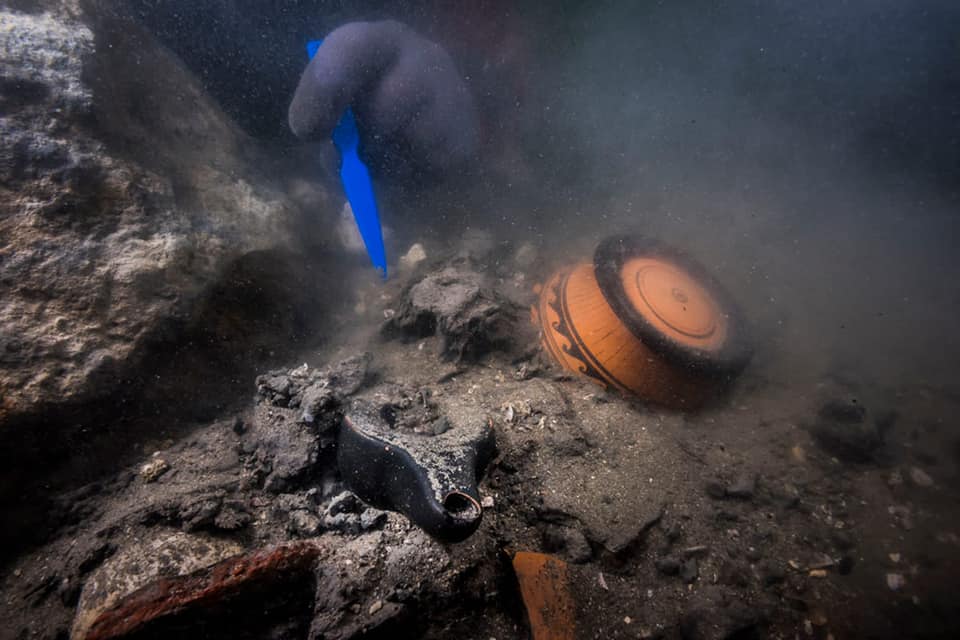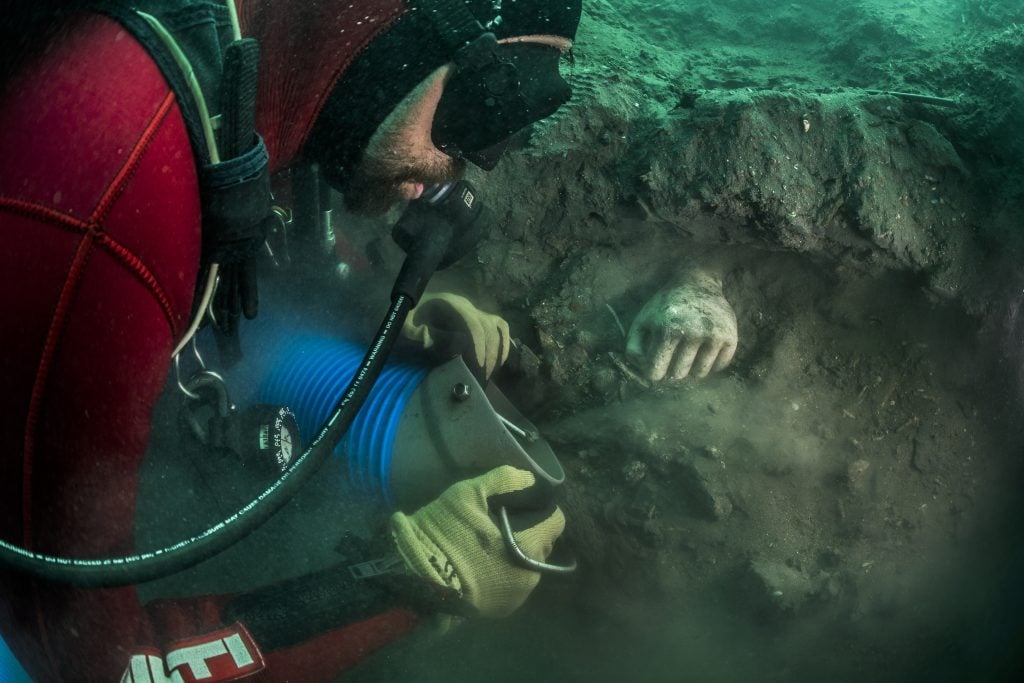Archaeology & History
The Hunt: The Legendary Sunken City of Thonis-Heracleion
The ancient Egyptian port was lost for over a thousand years.

When the demigod Hercules first arrived in north Africa, a colossal temple was erected in commemoration of his footfall at the ancient Egyptian port city of Thonis-Heracleion. The metropolis was also where Helen of Troy first found sanctuary when she absconded (or was kidnapped, depending on your interpretation) from Greece with her forbidden lover Paris, thus igniting the Trojan War. Yet the landmark of legend was almost erased from the annals of history after it was pummelled by a series of natural disasters, and finally swallowed by the Mediterranean sea. Now, over a millennium later, Thonis-Heracleion is resurfacing.
The site was the gateway into Egypt for Greek ships that came carrying trade goods, foot-soldiers, learned travelers, and aristocrats. But prior to its rediscovery only 24 years ago, no trace of the forgotten city had been found. All memory of it was reduced to classic texts by ancient Greek historians, including records by Greek historian Herodotus who wrote of the city’s great temple to Amun, in the 5th century B.C.E.

Remains of an ancient military vessel discovered in the Mediterranean sunken city of Thonis-Heracleion off the coast of Egypt. Photo by the Egyptian Ministry of Antiquities.
In 1993, an Egyptian Royal Air Force pilot flying over the coastal city of Abu Qir spied ruins in the water. The sighting triggered a series of investigations which culminated in Thonis-Heracleion’s rediscovery by archaeologist Franck Goddio of the European Institute for Underwater Archaeology (IEASM), seven years later.
The undersea archaeologist and his team of divers took six painstaking years to map out the submerged city, perplexing Classicists and Egyptologists who hitherto presumed it to be two separate cities. To do so, Goddio’s team utilized incredibly advanced technological surveys. The murky seawater meant reduced visibility for the divers, who had to rely on sonar to echo-locate changes in the topography of the ocean floor. The team also used a nuclear magnetic resonance magnetometer to pinpoint large objects, by detecting localized abnormalities in the earth’s magnetic fields. The magnetometer could identify geological fault lines caused by the weight of long-sunken buildings that compressed and fractured layers of sediment.

A votive hand is emerging from the sediment during an archaeological excavation in Thonis-Heracleion. End of 5th century B.C.E.-early 4th century B.C.E., probably from Cyprus. Photo by Christoph Gerigk, ©Franck Goddio/Hilti Foundation.
Perhaps it was the magnetometer that led Goddio and his team to the location of the statue of the fertility god Hapy, the largest known ancient Egyptian statue dedicated to a deity. Goddio went on to discover the very temple mentioned in Herodotus’s records. His findings illustrated that the city was of sacred import, hosting ceremonies like the Mysteries of Osiris that celebrated the god of the underworld’s rebirth, with a fluvial procession through the canals that drew worshippers from far and wide. The excavation revealed that the city that was more than just a trading hub; it was a melting pot of cultures and religions where Greek and Egyptian influences intertwined.
Yet, despite the wealth of discoveries, much of Thonis-Heracleion remains shrouded in mystery. Only a fraction of the city has been explored, leaving tantalizing questions about the lives of its inhabitants unanswered. The ongoing excavation efforts offer hope of uncovering more about everyday life in this ancient metropolis.
The Hunt explores art and ancient relics that are—alas!—lost to time. From the Ark of the Covenant to Cleopatra’s tomb, these legendary treasures have long captured the imaginations of historians and archaeologists, even if they remain buried under layers of sand, stone, and history.





